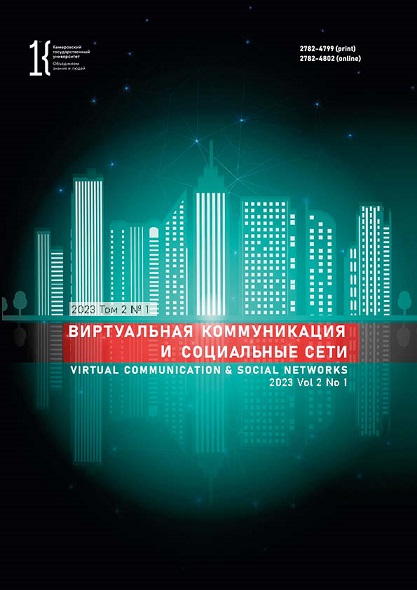Kemerovo, Russian Federation
from 01.01.2007 until now
Kemerovo, Russian Federation
This article introduces the phenomenon of videopoetry as a hybrid product of mass media whose popularity is based on intermediality, i.e., the cumulative effect on different perception channels. Videopoetry is a productive form of verbal creativity in the contemporary media culture with its active reception of art. The research featured poems by W. B. Yeats, T. S. Eliot, and W. H. Auden presented as videos and the way they respond to someone else's poetic word. The authors analyzed 15 videos by comparing the original text and the video sequence in line with the method developed by N. V. Barkovskaya and A. A. Zhitenev. The analysis revealed several options for relaying a poetic work as a music video. Three videos provided a direct illustration of the source text, suggesting a complete or partial visual duplication of the original poetic imagery. Five videos offered an indirect illustration of the source text by using associative images in relation to the central images of the poem. Five videos gave a minimal illustration: the picture did not dominate the text of the poem, but its choice implied a certain interpretation. Two videos featured the video maker as a reciter. The video makers did not try to transform the poetic text but used the video sequence as a way to enter into a dialogue with the original poem or resorted to indirect illustration to generate occasional meanings. Thus, video makers keep the original text unchanged and see the video sequence and musical accompaniment as their responsibility but maintain a dialogue between the original text and its game reinterpretation.
lyrics, video poetry, music video, video sequence, interpretation, reader reception
1. Barkovskaya N. V. Video poetry: the problem of subject and context. Philological Class, 2021a, 26(3): 21-33. (In Russ.) https://doi.org/10.51762/1FK-2021-26-03-02
2. Barkovskaya N. V. Interpretation of O. E. Mandelstam poems in Ural videopoesy. Uralskiy filologicheskiy vestnik. Seriya: Russkaya literatura XX-XXI vekov: tendencii i techeniya, 2021b, (3): 92-109. (In Russ.) https://doi.org/10.26170/23067462_2021_03_06
3. Zhitenev A. A. Modern literature in the context of media: the phenomenon of video poetry. Russian and Belarusian literature at the turn of the XX and XXI centuries, ed. Goncharova-Grabovskaya S. Ya. Minsk: RIHE, 2010, pt. 1, 78-83. (In Russ.) https://www.elibrary.ru/vukffn
4. Zyhovskaya N. L. The phenomenon of "active perception": social media as a tool to promote reading practices. Bulletin of the South Ural State University. Ser. Social Sciences and the Humanities, 2021, 21(2): 98-104. (In Russ.) https://doi.org/10.14529/ssh210213
5. Kirillova N. B. Evolution of media culture as a system of sign and its role in individual socialization. Nauchno-pedagogicheskiy zhurnal Vostochnoy Sibiri Magister Dixit, 2013, (2): 120-129. (In Russ.) https://www.elibrary.ru/qbmwhb
6. Pinezhaninova N. P. Actualization of everyday life space as a form of interpretation in the poetic video by K. Serebrennikov "The end of the beautiful era". Practices & Interpretations: A Journal of Philology, Teaching and Cultural Studies, 2016, 1(4): 185-196. (In Russ.) https://www.elibrary.ru/ykpabt
7. Pinezhaninova N. P. Metaphors in the poetic video clip. Russkiy yazyk kak inostrannyy i metody ego prepodavaniya, 2017, (28): 82-87. (In Russ.) https://www.elibrary.ru/zbilat
8. Poga L. N. Videopoetry as a way of modern art poetic discourse representation. Vestnik Kemerovskogo gosudarstvennogo universiteta kultury i iskusstv, 2018, (44): 33-40. (In Russ.) https://www.elibrary.ru/xwhjal
9. Semyan T. F., Smyshlyaev E. A. Video poetry in developing a new type of reader. Vestnik Chelyabinskogo gosudarstvennogo pedagogicheskogo universiteta, 2017, (10): 184-188. (In Russ.) https://www.elibrary.ru/ylqmxm
10. Soldatkina Ya. V. Literature on the Internet and the main directions of media culture development: pre-digital text and its network transformations. Nauka i shkola, 2021, (1): 29-38. (In Russ.) https://doi.org/10.31862/1819-463X-2021-1-29-38
















